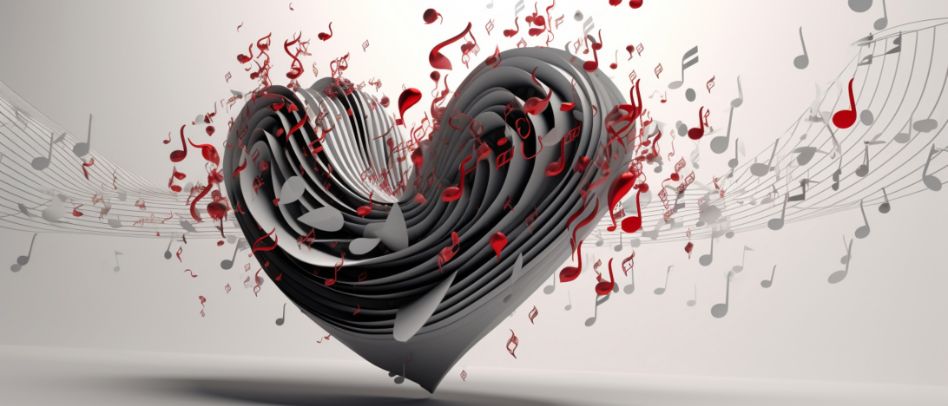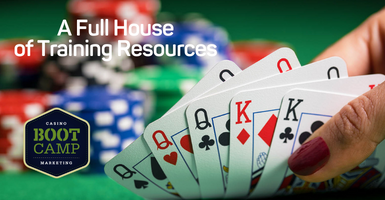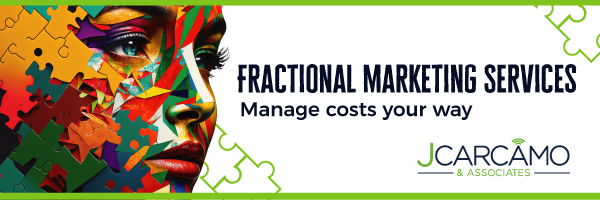Consider how much time you spend on Instagram or your favorite social platform. We are bombarded with visuals as we scroll through photos of friends and strangers and videos from thought leaders. Yet, sound offers a unique opportunity to capture attention and carve out a place in the hearts and minds of consumers. While the rise of digital advertising and the decline of reliance on traditional media like radio and television might seem to diminish the importance of sonic branding, the opposite is true. In an increasingly crowded online space, sound can be a powerful tool to cut through the noise and capture consumer attention. Just as a catchy logo grabs the eye, a memorable sound leaves a lasting impression. Think of the iconic sound of Law and Order or the satisfying pop of a Snapple lid – these sounds instantly evoke the brand.
Consider the last commercial you watched. Chances are, aside from the visuals, a catchy tune or a memorable voiceover probably lingers in your mind. That’s the power of sonic branding.
Our brains are wired to process sound differently from visual information. Sounds connect directly with our emotions, triggering memories and shaping our perceptions on a subconscious level. It is why the triumphant fanfare of an epic movie score gets your heart racing or why a soothing melody puts you immediately at ease. Sonic branding taps into this primal response to enhance brand recognition, evoke specific feelings, and create lasting brand loyalty.
As technology evolves, sound becomes even more integrated into how we interact with the world. Voice assistants like Alexa and Siri are now mainstream, and audio-centric platforms are on the rise. As consumers interact with brands increasingly through smart devices, the importance of a distinct sonic identity grows. A well-crafted sound strategy can forge deep emotional connections, increase brand recognition, and influence consumer behavior. To stay ahead in this changing landscape, a strategic sound identity is no longer a “nice-to-have.” It is essential.
Why Sonic Branding Matters
So, why should you invest time and resources into crafting a strategic sound for your brand? Here are some key benefits:
-
Instant Brand Recognition: A well-crafted audio logo, a signature jingle, or even a specific voice can instantly bring your brand to mind. Think of the Intel chimes or the “I’m Lovin’ It” McDonald’s jingle – these are sonic shortcuts to brand recognition.
-
Powerful Emotional Connection: Music and sound have a unique ability to evoke emotions. A playful jingle can create a feeling of fun and excitement, while a soothing soundscape can project calmness and trust. These emotions become intrinsically linked to your brand.
-
Stand Out in a Crowded Space: With endless brands vying for consumer attention, a distinctive sonic identity instantly sets you apart. Imagine a sea of logos. The right sound can cut through the noise and make your brand memorable.
-
Enhanced Customer Experience: Sonic branding is not just about catchy jingles. It is about using sound thoughtfully at every customer touchpoint, from website interactions to on-hold music, creating a cohesive and immersive brand experience.
The New Era of Sonic Branding
The landscape of sonic branding is rapidly changing, thanks in part to the proliferation of voice-activated devices and platforms. From Amazon’s Alexa to Google Home and beyond, how consumers interact with technology has fundamentally shifted, making audio branding more critical than ever. The proliferation of podcasts has changed the way we learn and gather information. Artificial intelligence and machine learning have further transformed this space, enabling brands to craft personalized sonic experiences that resonate with individual consumers on a deeper level. This new era also sees brands experimenting with a range of sounds – from environmental audio elements to the strategic use of silence – adding new dimensions to their sonic identities.
The Science Behind Sonic Branding
Our brains are hardwired to process sound in fascinating ways. Unlike visual information, which requires conscious attention, sound triggers emotional responses much faster and on a subconscious level. It’s why a sudden loud noise might make you jump, even if you don’t have time to assess the source of the sound.
When it comes to branding, sound has a powerful connection to memory. Research suggests that we recall information better when associated with an auditory cue. Studies have demonstrated that music can enhance memory recall, and familiar sounds trigger vivid memories even decades later. It is why we can instantly recall a song within a note or two.
Sonic branding leverages these neurological responses. Strategically pairing sounds with your brand creates powerful associations within a consumer’s mind. Over time, simply hearing your audio logo or brand jingle can evoke positive emotions, memories, and a strong sense of recognition.
Key Components of Sonic Branding
While the classic jingle or audio logo is a cornerstone of sonic branding, the strategy goes well beyond these familiar elements. Here’s an overview of the key components of a modern sonic branding toolkit:
-
Audio Logo: A short, signature sound (often only a few notes) that instantly identifies your brand. Think of Intel or McDonald’s for classic examples.
-
Brand Anthem: A more extended musical composition that embodies the spirit and values of your brand. This might be used in commercials, marketing videos, or on-location.
-
Soundtracks: Carefully chosen background music for videos, advertising, websites, and on-property environments that sets a mood and reinforces your brand’s identity.
-
Customized Hold Music: Instead of generic on-hold tunes, design music and messaging that reflects your brand’s personality and keeps customers engaged.
-
Response Sounds: The clicks, beeps, whooshes, and other delightful sounds accompanying user interactions with your website, apps, or products.
By strategically deploying these elements, you create a holistic sonic experience that builds a robust and multi-faceted connection with your audience.
Developing Your Sonic Identity
Developing a strong sonic identity is not merely choosing a random sound or tune. It requires a strategic approach that aligns with your brand’s values, speaks to your target audience, and uses the right mix of audio elements to achieve your goals.
Here are the key things to consider:
-
Alignment with Brand Values: The sounds you choose should reflect the essence of your brand. Is your brand bold and innovative? Perhaps energetic, upbeat music aligns well. Elegant musical compositions might be a better fit if you emphasize luxury and sophistication.
-
Know Your Audience: What kind of music and sounds resonate with your ideal customers? Consider their demographics, preferences, and the emotions you want them to associate with your brand.
-
The Toolkit of Sonic Branding: Think beyond a simple audio logo:
-
Brand Anthem: A longer musical piece that embodies your brand’s spirit.
-
Soundtracks: Music used in videos, advertisements, or on your website.
-
Interaction Sounds: Clicks, beeps, and notification sounds that give personality to your digital interfaces.
-
Successful Sonic Branding
Sometimes, the best way to understand the power of sonic branding is to look at successful examples:
-
HBO: Their dramatic, orchestral theme instantly evokes the sense of anticipation and prestige associated with their premium content. It has only slightly evolved since its inception.
-
T-Mobile: Their signature magenta-colored ring and catchy melody stand out in a sea of telecom brands.
-
Netflix: The simple “ta-dum” sound that opens their original content signifies the start of a quality streaming experience.
These brands demonstrate how well-chosen sounds become ingrained in consumer minds, driving recognition and shaping positive brand associations.
Implementing Your Sonic Strategy
You understand why sonic branding is essential and have a vision for the sounds that embody your brand. But how do you turn that vision into reality? Here’s a breakdown of the practical steps:
-
Start Small, Think Big: You don’t have to create a full suite of sonic assets overnight, especially if you are on a budget. Start with a memorable audio logo or a short jingle. As your strategy evolves, you can expand your sonic toolkit.
-
Consistency is Key: Once you have developed your audio assets, use them consistently across all your marketing and communications channels. This includes your website, commercials, social media, and in-store experiences.
-
Secure Rights and Licensing: If you are using existing music, ensure you have the proper licenses to avoid legal headaches. When creating custom sounds, work closely with composers and sonic branding experts to ensure you own the full rights to your audio. Remember, playing music on-property also requires certain separate licensing agreements.
-
Find the Right Partners: Unless you have in-house audio experts, consider partnering with a sonic branding agency or music production company. They can guide you through the strategic process of sound selection and creation, ensuring your audio assets are aligned with your brand objectives.
The Future of Sonic Branding
As we move into an increasingly audio-centric world, sonic branding will continue to evolve and play an even more significant role in marketing strategies. Here are some exciting trends to watch for:
-
Personalized Audio Experiences: Imagine tailored soundtracks and sound effects adapting dynamically to a user’s preferences and behaviors, creating a truly unique brand experience. Consider the impact of a VIP arriving in their room with a distinct playlist already coming through the television speakers.
-
Sonic Branding in the Metaverse: As virtual reality and the metaverse become more mainstream, brands will need distinctive sonic identities to stand out in these immersive digital environments.
-
Voice Search Optimization: With the rise of voice search, having a recognizable sonic logo or jingle could become crucial for ensuring voice assistants easily find and recall your brand.
In the relentless pursuit of consumer attention, sound offers a unique advantage. It taps into our emotions, triggers powerful memories, and creates deeper connections that visuals alone often can’t achieve. As the ways we interact with brands continue to evolve, sonic branding isn’t simply a luxury – it’s a strategic necessity.
Consumers crave authenticity and meaningful experiences. By crafting your sonic identity carefully, you demonstrate a commitment to creating a distinct and memorable brand personality that resonates with your audience at every touchpoint.
Is your brand ready to harness the power of sound? Here are a few things you can start with today:
-
Examine your current soundscape: Are the sounds across your website, social media, and in-person experiences consistent and aligned with your brand identity?
-
Consider a sonic audit: Partner with a sonic branding agency to evaluate your existing audio assets and identify areas for improvement.
-
Start small, dream big: If you do not have an audio logo, begin creating one. This could form the foundation of a robust sonic branding strategy.
-
Have us help you hit the right note: Let J Carcamo & Associates help you fine-tune your brand’s sonic identity and develop a strategy that resonates with your audience.






Recent Comments